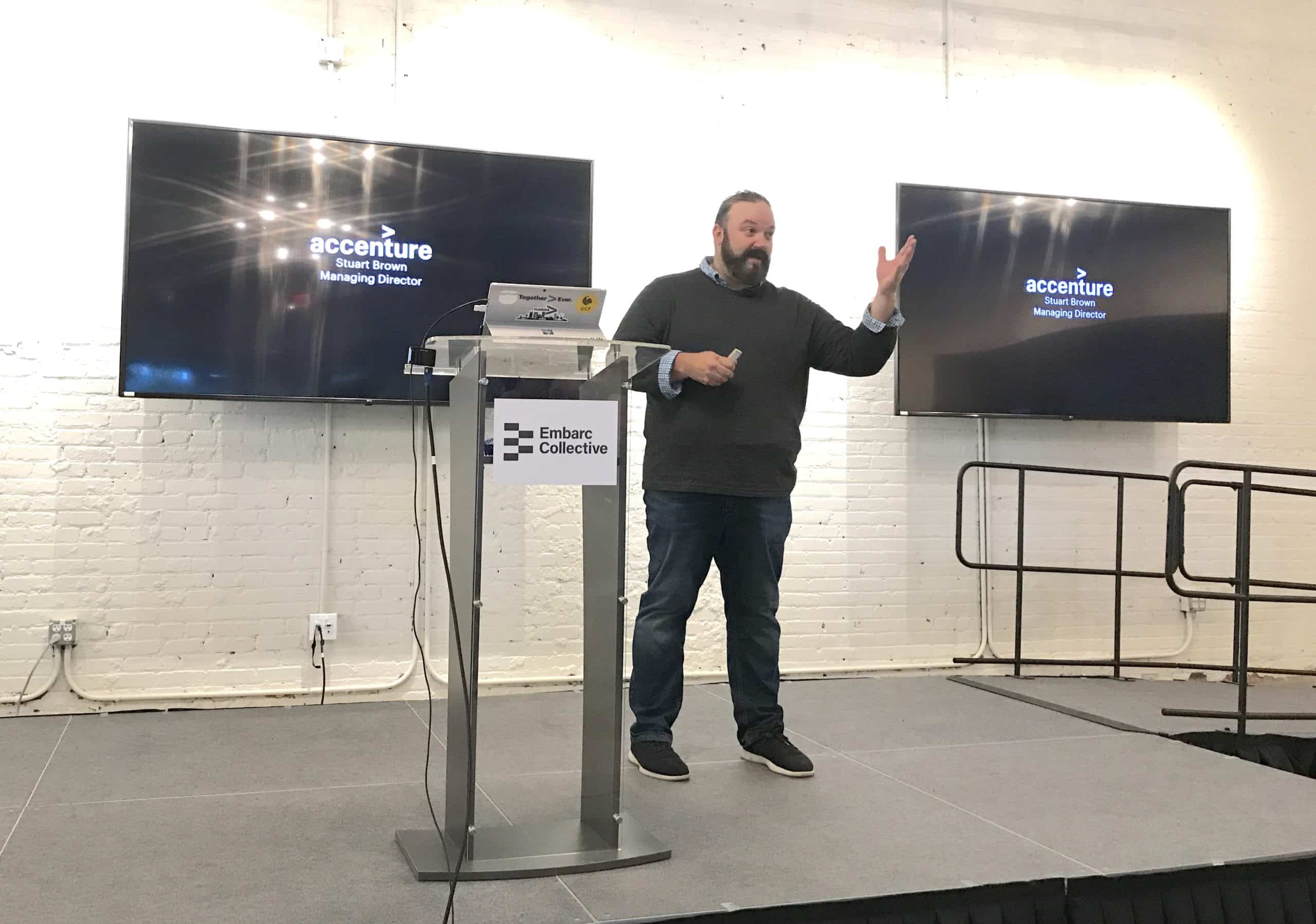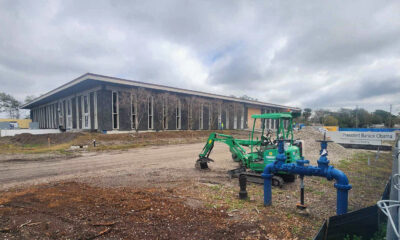Innovate
Accenture’s top Tampa executive offers five ideas to help your business succeed

Technology and innovation are critical to the success of your business – no matter what that business is – according to a leader in the local technology community.
That impacts the mindset that is needed to keep and win customers, said Stu Brown, group technology officer for Accenture’s Microsoft Business Group and Tampa Bay office managing director for Accenture (NYSE: ACN).
“Innovation used to be something that was pushed down to the IT department. People in the boardroom would say, call up the IT guy and tell him we need some of that innovation stuff. Innovation was a thing,” said Brown, speaking at Tampa Bay Tech’s poweredUP Tech event Wednesday.
“But innovative businesses are a different mindset. Every business now is a technology business. Every business. There’s not a business out there that’s not a technology business. If you think there is, you’re wrong. And every CEO is a technology CEO. Technology and innovation are critical to the success of every company, no matter what you do.”
Seeing innovation as a mindset has elevated the conversation around it, Brown said. Business leaders no longer say, “I need that thing,” but should ask, “Are we staying ahead of the innovation curve and are we staying ahead of our competitors and are we serving the values of our customers.”
Aligning customers’ and employees’ values and expectations with business value is a key theme in Accenture’s Technology Vision 2020, a report released earlier this month that is designed to help companies compete and succeed in a world where digital is everywhere.
“There’s the value that you can drive from the technology you implement and there are the values you keep as a company. Those two things have to go together. There are examples of companies deciding to state their values, then live those values, whether around sustainability, use of carbon fuel, the kind of company they keep,” Brown said. “They’re being very careful to say, we’re going to define our values and also look at the bottom line of the business. The belief is those two things together will drive more profitability and growth, because they are aligned with their customers.”
When value and values fail to align, companies face a “tech-clash,” or a tension between consumer expectations, the potential of technology and business ambitions, Accenture said.
The report focuses on five trends that C-level executives and members of the boards of directors should be thinking about to defuse a tech-clash. It’s also filled with examples of how companies have dealt with these trends. Brown addressed each one.
The I in experience, or helping people “choose their own adventure.” Organizations need to design personalized experiences for the interactions between technology and customers and employees.
The report cites McDonald’s (NYSE: MCD), which is giving employees more control over their workplace experience by allowing those workers to change displays on drive-thru digital ordering kiosks to feature personalized menus and recommendations based on weather, time of day, trending menu items and customers’ past purchases.
AI and me, or re-imaging the business through human and artificial intelligence collaboration. Artificial intelligence should be an additive contributor to how people perform their work.
The report looks at Lemonade, a startup designed to use human and AI collaboration to disrupt the insurance industry. Customers file claims with a chatbot that logs claim details and instantly compares the claim to others within the Lemonade database — a first wave of defense against fraud. If everything is okay, the claim can be paid out immediately to the customer. If a claim is too complex or problematic, the AI shares the information with a human agent, who steps in to manage the case.
The dilemma of smart things. This gets to the issue of who owns technology-enabled devices, which are continuously updated with new capabilities and are essentially in a constant beta state, or a testing phase. Businesses introducing these products have to address that ownership issue.
Signify, the new name of Philips Lighting, is providing lighting-as-a-service, by offering lighting based on the uptime and energy needs provided by its customers. The company maintains the materials, lightbulbs and sensors required to deliver the experience, swapping out older pieces for new in order to deliver a consistent experience. This also allows Signify to reuse, refurbish and recycle as much as possible, helping both the company and its clients to meet sustainability goals with better energy efficiency and reduced digital waste.
Robots in the wild, or robotic technology that has expanded beyond the warehouse or the manufacturing plant to other business segments. Super-fast internet through 5G will rapidly accelerate the trend, growing a company’s reach as well as its responsibility.
Companies such as UPS (NYSE: UPS), which is preparing to run a drone delivery fleet, and FarmWise, which deploys autonomous robots to handle everything from seeding to weeding and harvesting, were cited as examples of this trend.
Innovation DNA, or creating an engine for continuous innovation.
Brown cited Major League Baseball’s BAMTech, a streaming service developed in-house by Major League Baseball several years ago. Each MLB team invested about $1 million in development, Brown said. “It was like pulling teeth to get the teams to do that because it was not their core business. Their business was baseball … But they built it up and it became the standard of how to do high-definition video at scale,” he said.
In 2016, Disney bought a 33 percent interest in BAMTech for $1 billion, and the following year, Disney paid $1.58 billion to acquire another 42 percent interest and majority ownership.
BAMTech became more profitable than baseball, Brown said.
“Baseball built the best streaming service in the world. If you look at that kind of innovation strategy, there will be times you have to pull the teeth out of the tiger,” he said.
The Tampa-St. Pete area doesn’t have a lot of Fortune 500 companies such as those cited in the Accenture report, but the ideas still apply, Brown said.
The Tampa Bay Tech poweredUP event was held at Embarc Collective, a downtown Tampa startup hub, and Brown said the 45 member companies there could adopt the strategies in the report.
“It’s not a roadmap. It’s a way to think as an executive team about how do these things enhance or modify our business,” Brown said.







